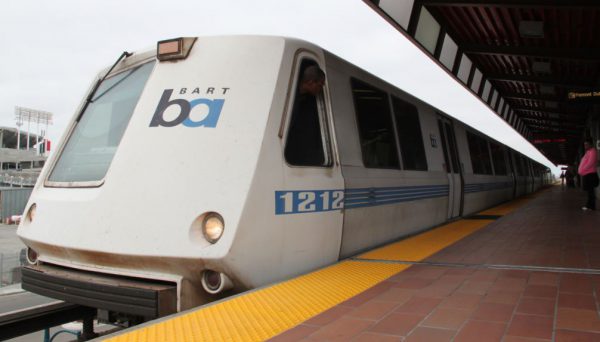Physical Address
304 North Cardinal St.
Dorchester Center, MA 02124
Physical Address
304 North Cardinal St.
Dorchester Center, MA 02124

With the Democrats scrambling to come up with a legislative agenda after their November takeover of the House of Representatives, an old idea is making a comeback: a “Green New Deal.” Once the flagship issue of the Green Party, an environmental stimulus package is now a cause de celebre among the Democratic Party’s progressive wing. While it looks like the party leadership isn’t too receptive to the idea, newly-elected Representative Alexandria Ocasio-Cortez has spearheaded legislation designed to create a “Select Committee for a Green New Deal.” The mandate of the proposed committee is ambitious, possibly to a fault. At times utopian in flavor, the committee would pursue everything from reducing greenhouse gas emissions to labor law enforcement and universal health care. A recent plan from the progressive think tank Data for Progress is more disciplined, remaining focused on environmental issues, with clearer numerical targets for transitioning to renewable energy and reducing greenhouse gas emissions. Yet in all the talk about a Green New Deal, there’s a conspicuous omission that could fatally undermine efforts to reduce greenhouse gas emissions: little to no focus is placed on the way we plan urban land use. This is especially strange considering the outsized role that the way we live and travel plays in raising or lowering greenhouse gas emissions. According to the Environmental Protection Agency (EPA), transportation and electricity account for more than half of the US’ greenhouse gas emissions. As David Owen points out in his book “Green Metropolis,” city dwellers drive less, consume less electricity, and throw out less trash than their rural and suburban peers. This means that if proponents of the Green New Deal are serious about reducing carbon emissions, they will have to help more people move to cities. One possible reason for this oversight is that urban planning […]
This book is an attack on current city planning and rebuilding. This is how Jane Jacobs opened her 1961 classic “The Death and Life of Great American Cities”. It wouldn’t be an inappropriate opener for Alain Bertaud’s upcoming “Order Without Design”. While Jacobs was an observer of how cities work and a contributor to new concepts in urban economics, Bertaud goes a step further. His book brings economic logic and quantitative analysis to guide urban planning decision-making, colored by a hands-on, 55-year career as a global urban planner. His conclusion? The urban planning practice is oblivious to the economic effects of their decisions, and eventually creates unintended consequences to urban development. His goal with this book is to bring economics as an important tool to the urban planning profession, and to bring economists closer to the practical challenge of working with cities. Maybe you have not heard about Alain Bertaud before: at the time I am writing this article, he has only a few articles published online, no Wikipedia page or Twitter account, and some lectures on YouTube – and nothing close to a TED talk. The reason is that instead of working on becoming a public figure, Bertaud was actually doing work on the ground, helping cities in all continents tackle their urban development problems. His tremendous experience makes this book that delves into urban economics surprisingly exhilarating. As an example, Bertaud shows a 1970 photo from when he was tracing new streets in Yemen using a Land Rover and the help of two local assistants who look 12 years old at most, a depiction of a real-life Indiana Jones of urban planning. In this book, mainstream urban planning “buzzwords” such as Transit-Oriented Development, Inclusionary Zoning, Smart Growth and Urban Growth Boundaries are challenged with economic analysis, grounded on […]

One alternative to market urbanism that has received a decent amount of press coverage is the PHIMBY (Public Housing In My Back Yard) movement. PHIMBYs (or at least the most extreme PHIMBYs) believe that market-rate housing fails to reduce housing costs and may even lead to gentrification and displacement. Their alternative is to build massive amounts of public housing. On the positive side, PHIMBYism, if implemented, would increase the housing supply and lower housing costs, especially for the poor who would be served by new public housing. And because there is certainly ample consumer demand for new housing, PHIMBYism would be more responsive to consumer preferences than the zoning status quo (which privileges the interests of owners of existing homes over those of renters and would-be future homeowners). But PHIMBYism is even more politically impossible than market urbanism. Market urbanists just want to eliminate zoning codes that prevent new housing from being built- a heavy lift in the political environment of recent decades. But PHIMBYs want to override the same zoning codes, AND find the land for new public housing (which often will require liberal use of eminent domain by local governments), AND find the taxpayer money to build that new public housing, AND find the taxpayer money to maintain that housing forever. And to make matters worse, the old leftist remedy of raising taxes on the rich might be inadequate to fund enough housing, because the same progressives who are willing to spend more money on housing also want to spend more public money on a wide variety of other priorities, thus making it difficult to find the money for housing.

Earlier this year, researchers Paavo Monkkonen and Michael Manville at the University of California Los Angeles (UCLA) conducted a survey of 1,300 residents of Los Angeles County to understand the motives behind NIMBYism. As part of the study, they presented respondents with three common anti-development arguments, including the risk of traffic congestion, changes to neighborhood character, and the strain on public services that new developments may bring. But according to their findings, the single most powerful argument motivating opposition to new development was the idea that a developer would make a profit off of the project. At first blush, this finding might seem kind of obvious. People really don’t like developers. As Mark Hogan observed last year on Citylab, classic films from “It’s a Wonderful Life” to “The Goonies” depict developers as money-grubbing villains. But, when you think about it, it’s pretty weird that this is the case. In what other contexts do we actively dislike people who provide essential services, even if they happen to turn a profit? I don’t begrudge the owner of the corner grocery every time I buy a loaf of bread or a gallon of milk, and I hope you don’t either. In fact, most of us are probably happy that folks like doctors and dentists earn a lot for what they do. So why are developers, who provide shelter, any different? One possibility is that developers are often, for lack of a better term, assholes. This is surely the case with at least some developers. Our president is arguably America’s most famous developer, even if he isn’t exactly the master builder he played on television. And President Trump’s defining characteristic in his “Celebrity Apprentice” role—and evidently in real life—is that he is a bit of an asshole. But it isn’t just him. Most cities have […]

It’s an understatement to say that zoning is a dry subject. But in a new video for the Institute for Humane Studies, Josh Oldham and Professor Sanford Ikeda (a regular contributor to this blog) manage to breath new life into this subject, accessibly explaining how zoning has transformed America’s cities. From housing affordability to mobility to economic and racial segregation to the Jacobs-Moses battle, they hit all the key notes in this succinct new video. If you need a go-to explainer video for the curious new urbanists, this is the one. Enjoy!

When I first became interested in urban planning, I believed a piece of professional mythology that went like this: “For all its faults, Euclidean zoning was a well-meaning effort to expand nuisance regulation in the face of the urban industrialization. It was later practitioners who used zoning for selfish and exclusionary purposes.” While not totally without basis, I now think this view is wrong. Today I would like to show how the iconic example of a nuisance that supposedly motivated Euclidean zoning—the Equitable Life Building in New York City—was in large part controversial because it threatened the interests of existing landlords. The Equitable Life Building at 120 Broadway was completed in 1915. A vanity project of an industrialist—Thomas Coleman duPont—as so many skyscrapers were and are, the projected stood 42-stories high across an entire block without setbacks, adding a startling one and a quarter million square feet of rentable office space to Lower Manhattan. Needless to say, some New Yorkers weren’t happy. But why? The conventional wisdom holds that the Equitable Life Building caused such a stir because it literally cast a shadow over the rest of the neighborhood. Indeed, the building cast a shadow stretching nearly a fifth of a mile across Broadway. But it wasn’t just the shadows that made the Equitable Life Building so uniquely audacious—after all, it wasn’t the tallest building in the neighborhood (this honor would go to the Woolworth Building, completed four years earlier 1912) and it wasn’t the first skyscraper to take up an entire city block without setbacks (by this point, the Flatiron Building was already an icon of the city). Rather, what made the project especially upsetting, on top of standard concerns about light and air, was that it was adding so much floor space at a time when the Lower […]

On August 23rd, a California assembly bill aimed at increasing transit-oriented development, like housing, was passed by the state senate, confirmed by the assembly, and headed to Governor Jerry Brown’s desk for signing. The bill, AB 2923, specifically targets the San Francisco Bay Area—making it easier than ever for the Bay Area Rapid Transit (BART) to build housing on the land it owns around its transit stations. Previously, housing developments on BART-owned land were still subject to local zoning rules, pushing projects through local processes to be approved before building began. This local control led to many delays, and, as a result, housing denials in the midst of an ongoing housing shortage—on that repeatedly spurs news headlines decrying four-plus hour super commutes, median home prices over $1 million, and neighborhoods blocking affordable housing. State bills like AB 2923 are a response to these reports, as well as the local control that led to them. If passed, AB 2923 and other bills like it, will bypass local control’s draconian rules to allow more housing to be built and ease the housing shortage. Under current law, land owned by BART is often subject to discretionary review in Bay Area cities. This forces BART to become de facto experts in every municipality zoning code, an impossible task that would take away from their focus on improving their transit system. Even attempting to master the zoning codes of every municipality takes time. Ultimately, this causes delays in building housing that’s so sorely needed. But this could easily be avoided if BART could establish their own zoning rules under AB 2923. Housing and transit is intrinsically linked and, just like suburban home developers build the roads to best suit their development, urban transit authorities like BART must utilize their capacity to build the homes best […]
A pure libertarian might argue that in an ideal world, there’d be no need for government-subsidized housing for low- and moderate-income households. Nevertheless, it seems to me that in the world we actually live in, even people generally opposed to the welfare state should favor more such housing. This is so for several reasons. First, government raises the cost of housing through a wide variety of regulations- some justified (e.g. building codes necessary for safety), some not-so-justified (e.g. exclusionary zoning). These regulations, by raising the cost of housing, effectively take money from all households. And because these restrictions aren’t based on ability to pay, they are especially painful for low-income households. Public housing and similar programs, rather than being a subsidy to the undeserving poor, are merely compensation for this act of plunder. Second, even if the United States abolished zoning tomorrow, it might take decades for housing supply to increase enough to bring rents down. So in the interim, lower-income households would still be suffering from the effects of zoning, and would deserve compensation just as much as they do under the status quo. Third, even if the United States abolished zoning and similar restrictions tomorrow, public health and safety might support certain restrictions that nevertheless increase the cost of housing- for example, some basic safety protections in building codes. It seems to me that as a matter of justice, government should not be forcing people into homelessness, so government should subsidize housing in order to make up for the costs imposed by even the most legitimate regulations. Finally, even if there were no housing-related regulations at all, the cost of land would create a floor under housing costs, which means some people would be homeless without government support. So if homelessness creates harmful social externalities of any kind, […]

How much should we blame planning for the degree to which cities sprawl? As much time as we (justifiably) spend here on this blog explaining how conventional U.S. planning drives excessive sprawl, it’s worth periodically remembering that, at the end of the day, the actual extent of the horizontal expansion of cities is largely outside the control of urban planning. Consider Houston. Whenever I say anything nice about Houston’s relatively liberal approach to land-use regulation, someone invariably comments some variation of the following: “Yes, that’s all well and good in theory. But in practice, heavily regulated cities like Boston are far more urban and walkable, so maybe relaxed land-use regulations aren’t so great.” Indeed, most of Houston is classic sprawl. But this begs the question: to what extent can urban planning policy be blamed for sprawl? The urban economist Jan Brueckner, drawing on an extensive literature, distinguishes between the “fundamental forces” that naturally drive urban growth outward and the market failures that push this growth beyond what might occur in an appropriately regulated market. (For the purposes of this post, I’ll be using “sprawl” and “horizontal urban expansion” interchangeably. In the same paper, Brueckner thoughtfully distinguishes the two.) The latter, urban planners can address. The former, not so much. Let’s look first at the “fundamental” variables that planners have little to no control over. Brueckner identifies three: population growth, rising income, and falling commuting costs. The first variable is obvious: as cities grow, demand for all housing goes up, and some of that housing goes out on the periphery regardless of planning policy. Metropolises like Houston, Dallas, and Atlanta are currently experiencing 2% population growth every year, meaning they are on track to double in population in the next 35 years. You would expect a lot of horizontal expansion, all else […]
I recently discovered a new logical fallacy: the “Morton’s Fork” fallacy. This argument is one in which contradictory observations lead to the same conclusion. For example, if I argue that new housing near public transit is bad because it (1) spurs gentrification by bringing rich people into the neighborhood and (2) increases crime by bringing poor people into the neighborhood, I am engaging in this fallacy. Similarly, I have heard arguments that new housing is bad because it (1) brings down property values and (2) increases property values. In such situations, it is sometimes possible that one of the two claims could be true, but it is unlikely that both claims could be true.